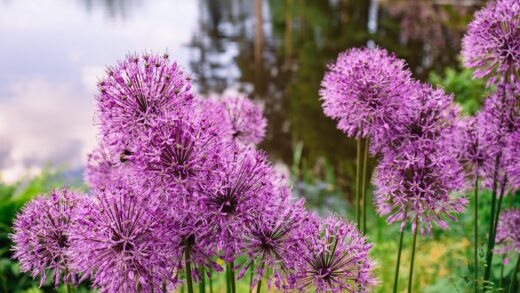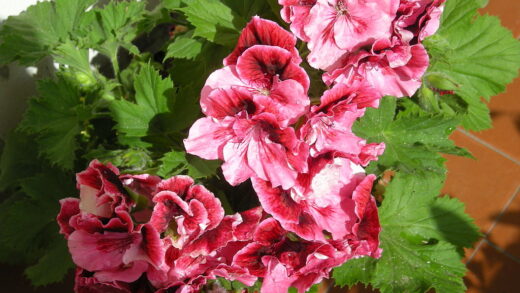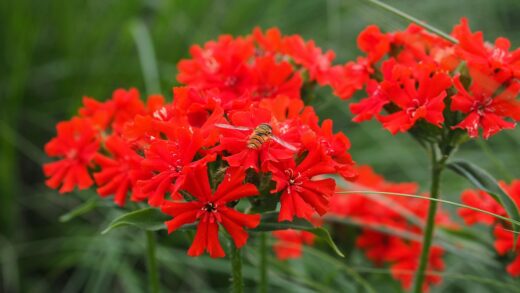The care of amaryllis

The amaryllis, with its spectacular, trumpet-shaped flowers, is a popular houseplant, especially during the winter months. To ensure its long-term health and vibrant blooms, it is essential to provide it with the appropriate care throughout its annual growth cycle. This involves understanding its needs for light, water, and temperature, as well as its periods of active growth and dormancy. Proper care not only results in stunning floral displays but also encourages the bulb to mature and produce even more impressive flowers in subsequent years. A well-tended amaryllis can be a source of joy for many seasons, becoming a cherished part of your indoor garden.
The foundation of successful amaryllis care begins with selecting a healthy, robust bulb. When purchasing, look for large, firm bulbs that are free from any signs of mold, soft spots, or physical damage, as these can indicate underlying health issues. The size of the bulb is often a good indicator of the potential for a spectacular floral display; larger bulbs typically produce more flower stalks and a greater number of blooms. It’s also important to check for the presence of a few healthy, fleshy roots at the base, although some may have been trimmed for shipping. A healthy bulb is the cornerstone of a thriving plant, setting the stage for vigorous growth and breathtaking flowers.
Once you have your bulb, providing the right environmental conditions is the next critical step. Amaryllis plants thrive in bright, indirect light, so placing them near a south-facing window where they can receive several hours of sunlight is ideal, though direct, intense sunlight should be avoided as it can scorch the leaves. The optimal temperature for amaryllis during its growing phase is between 20-24°C (68-75°F), which aligns well with typical indoor home temperatures. Maintaining consistent warmth encourages steady growth of both the flower stalk and the foliage, which is vital for the bulb’s development.
After the flowering period has concluded, the care routine for your amaryllis must adapt to support the next phase of its life cycle. It is crucial not to remove the leaves after the flowers have faded, as these are essential for photosynthesis. This process allows the plant to gather energy from sunlight, which it then stores in the bulb for the next blooming season. Continue to water the plant regularly and provide it with a balanced liquid fertilizer every two to four weeks to replenish the bulb’s energy reserves. This post-blooming care is what determines the quality and quantity of flowers you will see the following year.
Understanding the growth cycle
The life cycle of an amaryllis is a fascinating process that alternates between periods of active growth and dormancy, each with its own specific care requirements. The cycle typically begins in late autumn or early winter when the bulb is planted and begins to awaken. With warmth and a small amount of water, a flower stalk will emerge, often before any leaves appear. This stalk grows rapidly, culminating in the spectacular blooming period which can last for several weeks. Understanding this initial phase is key to timing the planting for desired holiday displays.
More articles on this topic
Following the magnificent floral show, the plant enters its vegetative growth phase. During this time, the long, strap-like leaves will fully develop and continue to grow. This is arguably the most important period for the long-term health of the bulb. The leaves act as the plant’s solar panels, capturing light energy and converting it into chemical energy through photosynthesis. This energy is then diligently stored within the bulb, essentially “recharging” it for the next flowering season. It is during this phase that consistent watering and fertilization are most critical.
As late summer or early autumn approaches, the amaryllis naturally prepares for its dormant period. You may notice the leaves beginning to yellow and wither, which is a clear signal that the plant is entering a state of rest. This is a normal part of the cycle and should not be a cause for alarm. At this point, you should gradually reduce watering, allowing the soil to dry out completely. This signals to the bulb that it is time to cease active growth and conserve its stored energy for the upcoming dormancy.
The dormant period is a crucial resting phase for the amaryllis, lasting anywhere from eight to twelve weeks. During this time, the bulb should be stored in a cool, dark, and dry place, with temperatures ideally around 10-13°C (50-55°F). A basement, garage, or even a cool closet can be suitable locations. It is essential to withhold all water during this period to prevent rot and to allow the bulb to fully rest. This chilling period is what triggers the physiological processes within the bulb that are necessary for it to initiate the development of a new flower stalk once it is brought back into warmer conditions.
Post-flowering care essentials
Once the last of the magnificent amaryllis flowers has faded and wilted, a new and vital phase of care begins. It is a common mistake to neglect the plant at this stage, but this is precisely when the foundation for next year’s blooms is laid. The first step is to carefully remove the spent flowers to prevent the plant from expending energy on seed production. Snip the individual flowers off as they fade, and once the entire stalk starts to yellow and droop, it can be cut back to about two to three centimeters above the bulb, being careful not to damage any emerging leaves.
More articles on this topic
With the flower stalk removed, the plant’s focus shifts entirely to vegetative growth, and your care routine should support this. The long, green leaves that develop are the powerhouse of the plant. It is absolutely essential to allow these leaves to grow and mature fully, as they are responsible for photosynthesizing and creating the food reserves that will be stored in the bulb. Provide the plant with as much bright, indirect sunlight as possible during this period to maximize its energy production capabilities. A healthy, robust set of leaves is a direct indicator of a bulb that is effectively preparing for future flowering.
Consistent watering and a regular feeding schedule are paramount during this post-flowering growth phase. Keep the soil consistently moist but never waterlogged, as this can lead to bulb rot. Allow the top inch or two of the soil to dry out between waterings. Every two to three weeks, apply a balanced liquid fertilizer formulated for houseplants at half the recommended strength. This provides the necessary nutrients for vigorous leaf growth and ensures that the bulb is well-nourished and able to store sufficient energy for a spectacular floral display the following season.
As the season progresses into late summer, you can move your potted amaryllis outdoors to a location that receives partial shade, especially from the intense afternoon sun. This allows the plant to benefit from natural light and air circulation, further enhancing its growth. Continue your watering and fertilizing regimen throughout the summer. This period of outdoor growth significantly contributes to the development of a large, healthy bulb, which is the ultimate goal of the post-flowering care period. A larger, more nutrient-rich bulb will invariably produce more flower stalks and larger blooms in the subsequent flowering season.
Choosing the right container and soil
Selecting the appropriate container is a critical first step in providing the best possible environment for your amaryllis. The pot should be relatively snug, allowing for only about two to five centimeters of space between the bulb and the sides of the container. This slightly root-bound condition actually encourages the amaryllis to focus its energy on producing flowers rather than excessive root growth. It is absolutely essential that the chosen pot has at least one drainage hole at the bottom to prevent water from accumulating, which is a primary cause of bulb rot. A heavy pot made of terracotta or ceramic is often a good choice as it provides stability and helps to counterbalance the tall, top-heavy flower stalks.
The growing medium you use is just as important as the container itself. Amaryllis bulbs require a well-draining soil mix to thrive and prevent moisture-related diseases. A high-quality, sterile potting mix is a good starting point, but it can be improved by amending it to enhance its drainage properties. A recommended blend is two parts standard potting soil, one part perlite or coarse sand, and one part well-rotted compost or peat moss. This combination provides adequate nutrients and structure while ensuring that excess water can easily escape, keeping the roots and the base of the bulb healthy.
When you are ready to plant your amaryllis, fill the bottom of the pot with a layer of the prepared soil mix. Place the bulb on top of the soil, gently spreading out any existing roots. The correct planting depth is crucial; you should leave the top one-third to one-half of the bulb exposed above the soil line. Planting the bulb too deeply can trap moisture around its neck, which significantly increases the risk of rot and other fungal infections. This positioning also helps to stabilize the bulb as it begins to produce its tall, heavy flower stalks.
After situating the bulb at the correct depth, carefully fill in the surrounding area with more of the soil mixture, firming it gently around the base of the bulb to secure it in place. Once potted, water the soil thoroughly until you see water begin to drain from the bottom of the pot. After this initial watering, you should water sparingly until you see the first signs of new growth, such as the tip of a flower stalk or a leaf emerging from the top of the bulb. This initial period of drier soil encourages the bulb to develop a strong root system before it invests energy into top growth.
Managing light and temperature
Proper management of light is a cornerstone of successful amaryllis cultivation, directly influencing both its growth and flowering potential. During the active growth and blooming period, the plant requires bright, but indirect, sunlight. An east-facing window that receives gentle morning sun is often ideal, but a south or west-facing window can also be suitable, provided the light is filtered by a sheer curtain to prevent the intense afternoon sun from scorching the leaves and flowers. To ensure even, upright growth and prevent the flower stalk from leaning excessively towards the light source, it is important to rotate the pot a quarter turn every few days.
The ambient temperature plays a significant role in the development and longevity of the amaryllis blooms. For optimal growth of the flower stalk and leaves, maintain a consistent room temperature between 20-24°C (68-75°F). Once the flower buds begin to open, moving the plant to a slightly cooler location, around 16-18°C (60-65°F), can significantly extend the life of the blossoms, allowing you to enjoy their spectacular display for a longer period. It is crucial to avoid placing the plant near drafts from windows or doors, or close to heat sources like radiators or vents, as sudden temperature fluctuations can stress the plant.
After the flowering period is over and the plant enters its vegetative growth phase, its light requirements remain high. This is the time when the leaves are working hard to photosynthesize and replenish the energy stores within the bulb. Continue to provide the amaryllis with plenty of bright, indirect light throughout the spring and summer months. If possible, moving the pot outdoors to a location with dappled sunlight after the last frost can be highly beneficial for the bulb’s development, leading to more robust growth and a better chance of reblooming in the following year.
The dormant period, which is essential for reblooming, requires a dramatic shift in both light and temperature conditions. Once you have ceased watering in the late summer or early autumn and the leaves have withered, the bulb needs to be stored in a cool, dark, and dry environment. An ideal temperature range for dormancy is between 10-13°C (50-55°F). This cool period is a critical trigger that signals the bulb to prepare for a new flowering cycle. After eight to twelve weeks of this cool, dark rest, you can bring the bulb back into a warm, bright location and resume watering to initiate a new round of growth.
Common care mistakes to avoid
One of the most frequent and detrimental mistakes in amaryllis care is overwatering. These bulbs are highly susceptible to rot, and sitting in waterlogged soil is a sure way to cause serious damage. It is crucial to allow the top few centimeters of the soil to dry out completely before watering again. Always use a pot with adequate drainage holes and discard any excess water that collects in the saucer beneath the pot. Remember that during the initial phase after planting, the bulb needs very little water until new growth appears, and during its dormancy, it requires no water at all.
Another common error is providing improper lighting conditions for the plant. While amaryllis needs bright light to thrive, placing it in direct, scorching sunlight can burn its leaves and cause the flowers to fade prematurely. Conversely, insufficient light will lead to weak, leggy growth, with the flower stalk stretching and leaning excessively as it searches for a light source. The ideal placement is in a location that receives several hours of bright, indirect or filtered sunlight each day, combined with regular rotation of the pot to promote straight, sturdy growth.
Neglecting the plant after it has finished blooming is a mistake that prevents many amaryllis from flowering in subsequent years. It is tempting to discard the plant once its spectacular show is over, but the post-flowering period is when the bulb works to store energy for the next season. It is essential to continue watering and fertilizing the plant while the leaves are green and healthy. Cutting off the leaves prematurely starves the bulb and severely diminishes its ability to produce flowers the following year. The leaves should only be removed once they have naturally yellowed and withered.
Finally, a critical mistake is failing to provide the amaryllis with a necessary dormant period. Without a period of rest in a cool, dark place, the bulb will not receive the environmental cues it needs to initiate a new flowering cycle. Many growers simply continue to water and care for the plant year-round, which results in lush foliage but no flowers. Forcing dormancy by withholding water and moving the bulb to a cool location for at least eight to ten weeks is a non-negotiable step if you wish for your amaryllis to rebloom year after year.
Encouraging reblooming
The key to successfully encouraging an amaryllis to rebloom lies in diligent care throughout its entire annual cycle, particularly after the initial flowering has finished. The process begins the moment the flowers start to fade; at this point, you must shift your focus from enjoying the blooms to nurturing the bulb for the future. By providing the plant with optimal conditions for leaf growth during the spring and summer, you are essentially helping it to recharge its battery. A robust and healthy foliage phase directly translates into a well-nourished bulb capable of producing another stunning floral display.
A critical component of this energy-storing phase is a consistent fertilization schedule. After the flower stalk has been cut back, begin feeding your amaryllis every two to four weeks with a balanced, water-soluble fertilizer. A formulation with a higher potassium and phosphorus content can be particularly beneficial for bulb development and future flower production. Continue this feeding regimen throughout the spring and summer months while the leaves are actively growing. This consistent supply of nutrients is vital for replenishing the energy that was expended during flowering and for building up the reserves needed for the next cycle.
Inducing a proper dormant period is the non-negotiable trigger for reblooming. In late summer or early autumn, gradually reduce watering and move the plant to a location with lower light levels. This signals the amaryllis to begin shutting down its active growth. Once the leaves have turned yellow and withered, remove them and cease watering completely. The pot should then be moved to a cool, dark, and dry location, such as a basement or garage, where temperatures remain between 10-13°C (50-55°F). This rest period should last for a minimum of eight to twelve weeks to ensure the bulb is ready to initiate new flower buds.
After the dormant period has been successfully completed, it is time to reawaken the bulb. Bring the pot back into a warm, brightly lit area and provide it with a thorough watering. This combination of warmth and moisture will break the dormancy and stimulate the bulb to begin a new growth cycle. You should see the tip of a new flower stalk or leaves emerge within a few weeks. Once growth begins, you can resume your regular care routine, and in approximately six to eight weeks, you will be rewarded with another spectacular display of amarygllis blooms, a direct result of your dedicated year-round care.



















